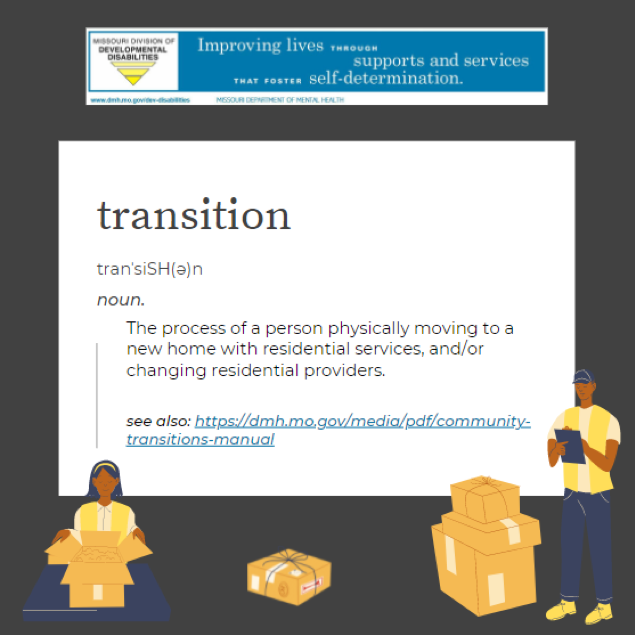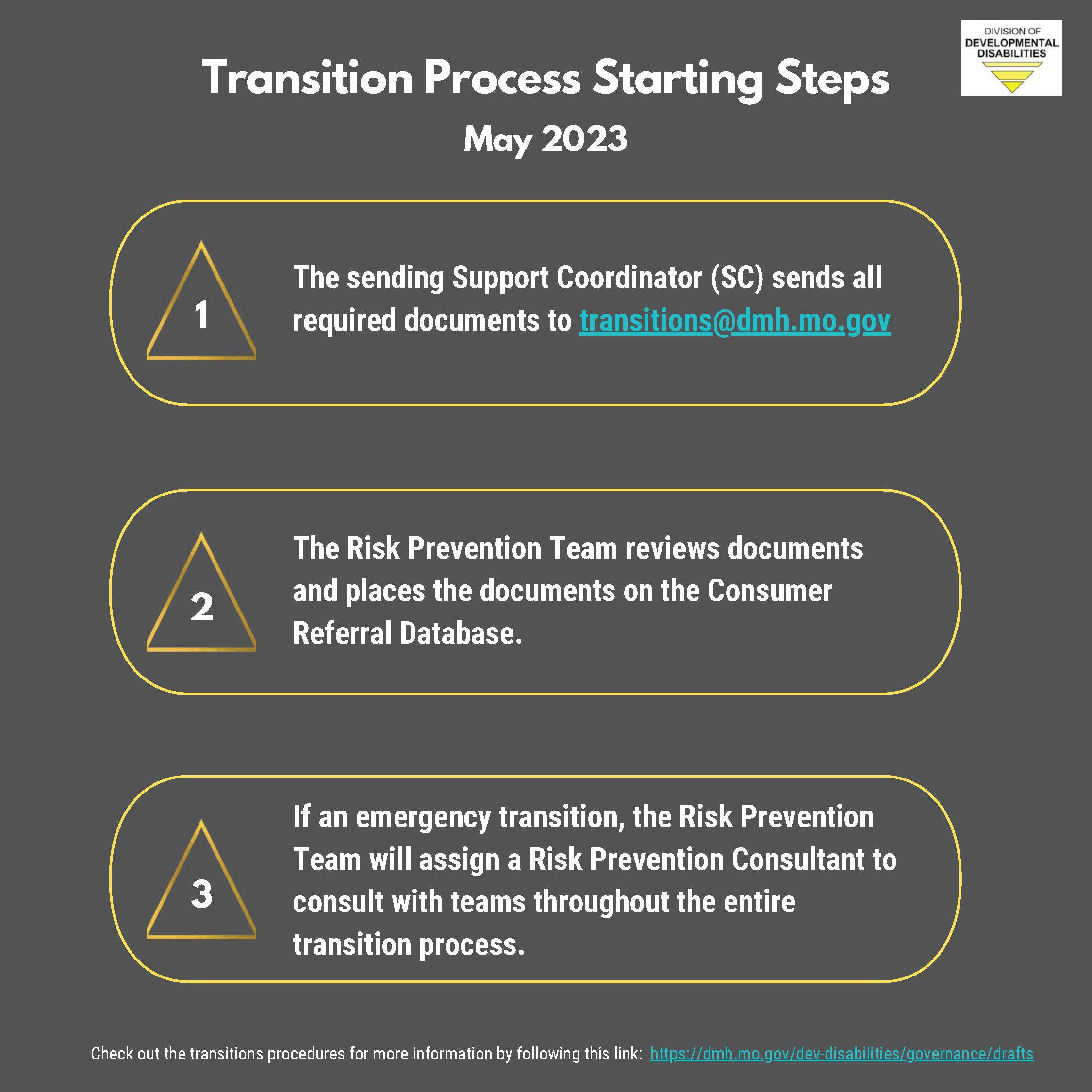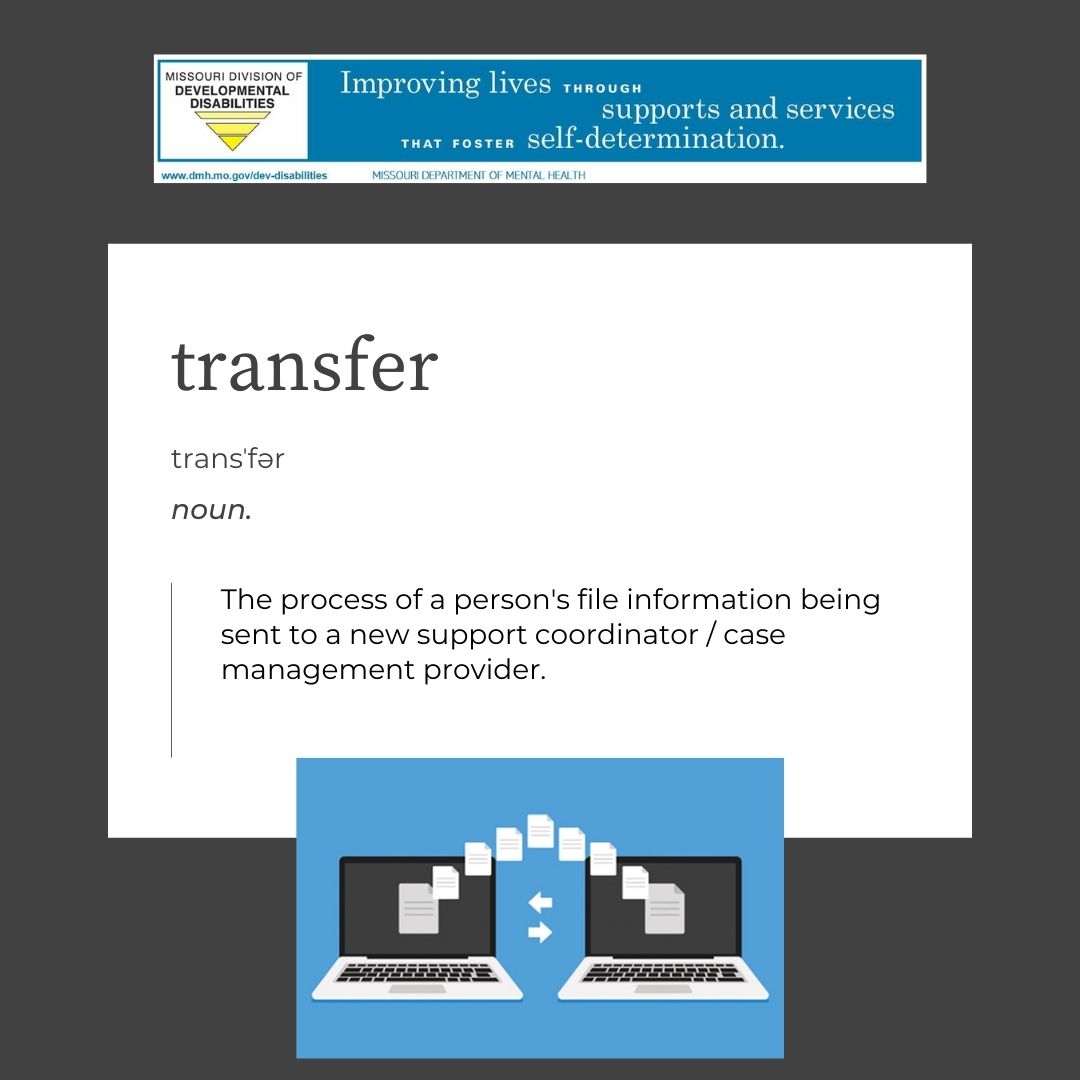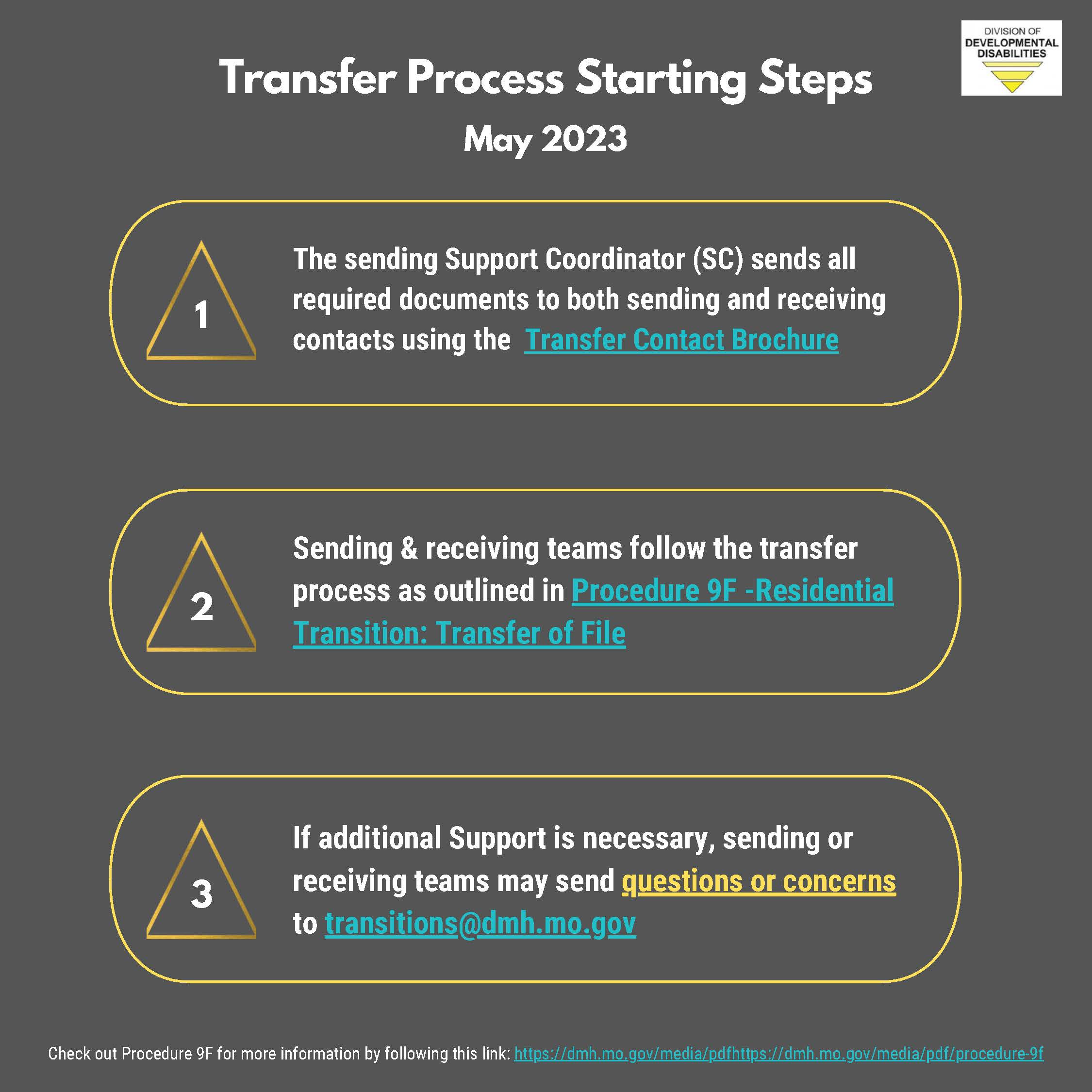- What is a Transition?
-
The transition process includes adherence to Guideline 67, the process as outlined on this webpage, use of the Checklist for Residential Community Living Moves, and more than likely being added to the Consumer Referral Database by sending in a Consumer Referral Profile. Transitions end shortly after the post move meeting when a tentative transfer date is agreed upon and once the completed Checklist for Residential Community Living Moves is sent to the team which may be before an official transfer email is sent.
Types of transitions include people who are moving that receive residential funding, or are involved in a child specific contract, inter-divisional agreement, or host home setting. Transitions are not transfers. For more information about transfers, please see the below section of this webpage.
- Transition Starting Steps
When a person needs added to the Consumer Referral Database the following steps occur:
When requesting help or involvement from the Risk Prevention Team, please follow this helpful Transition-Transfer Mailbox Checklist to ensure all of the necessary information is included in correspondence. Including all of the requested documents during the starting steps will ensure efficient turnaround time for your request.
- What is a Transfer?
-
Transfers are different from transitions because they are the exchange of file information from the sending support coordination team to the receiving support coordination team. This does not always involve a person changing residential services or physically moving, and access to residential waiver funding is not always necessary.
- Transfer Starting Steps
When a person needs to transfer case management services to another support coordinator or targeted case management entity the following steps occur:
Transfers are conducted utilizing the Transfer Contact Brochure, and only require involvement of the risk prevention team when the sending and receiving support coordination teams are stuck and need third party support. When additional support is needed, support coordinators may send questions or concerns to transitions@dmh.mo.gov.
The transfer process begins with an official email from the sending support coordinator connecting all of the necessary parties (utilizing the transfer contact brochure) and attaching the Transfer Form to the email.
- Resources and Forms:
Transition Procedures: To learn more about the roles, responsibilities, and the process to be followed for transitions and transfers, please utilize the following procedures.
- 9B - Residential Transition: Selecting a Provider
- 9C - Residential Transition: Planning the Transition
- 9D - Residential Transition: Move Coordination
- 9E - Residential Transition: Post-Move Follow-up
- 9F - Residential Transition: Transfer of File
To ensure efficient and timely responses to requests occur, please utilize the following checklist and guide when sending communication to the transitions@dmh.mo.gov inbox:
The Consumer Referral Profile is used to give providers an overview of the person who is looking for placement, including what types of services and support they need to be successful and happy in their new home:
When a person is moving, the sending team uses the Housemate Compatibility survey and tool to help match people with potential new roommates:
When SC is sending in a referral packet to add to the CRD, if the individual is under 21 years of age, SC will need to complete, obtain the guardians signature and send in with the referral packet.
The Transition checklist is a planning tool that guides teams through the evidence-based essential things that need to be in place for a successful move:
Teams involved in administrative transfers utilize the following brochure to know who to send information to when there is a transfer in support coordination. Contact Contessa.Isaacson@dmh.mo.gov to receive an official copy:
- Transfer Contact Brochure
The sending support coordination team utilizes the following transfer form when requesting a transfer of service from one team to another:
The Transition Monitoring Guideline describes the monitoring process to be used by the Risk Prevention Team:
Specific benchmarks found in the transition monitoring tool are required for all transitions
- Training
Transition Training Resources
- PreChecklist for Transition Meetings
- Scheduling Systems
- Time Frames for Transition Meetings
- Person-Centered Transitions Video
- Person-Centered Transitions Guide
Beyond transition meetings, there are a lot of things to keep track of, and common problems can occur. Please see the below resources to help aid in building a good system to support healthy transitions for your organization and the individuals you support.
- Provider CRD Review Tool
- Transition Review Tool Identifying Needed Supports
- 30 Day Notice Problem Solving Guide
- Transitions Tips for Success
- Transition Tracker
Community Transitions
Residential Providers shall maintain compliance with 42 CFR 441.301




